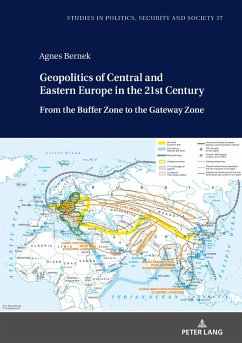This book seeks to answer how we can reposition the geopolitical situation of the Central and Eastern European (CEE) region in the 21st century. CEE region defined by the socialist past has transformed in the 21st century. Within geopolitical thought we must abandon the paradigms of the Cold War period. The role of a gateway zone to entail links between the great powers. In the CEE region it is possible to bound four gateway regions along the north-south Baltic-Adriatic axis (Baltic, North Adriatic, Central European and Eurasian) and two gateway regions along the southeast-east European axis (Mediterranean and Black Sea). The key question of the 21st century is whether a new gateway zone of the present forming World-Island can be developed along a north-south Baltic-Adriatic axis.
Bitte wählen Sie Ihr Anliegen aus.
Rechnungen
Retourenschein anfordern
Bestellstatus
Storno








